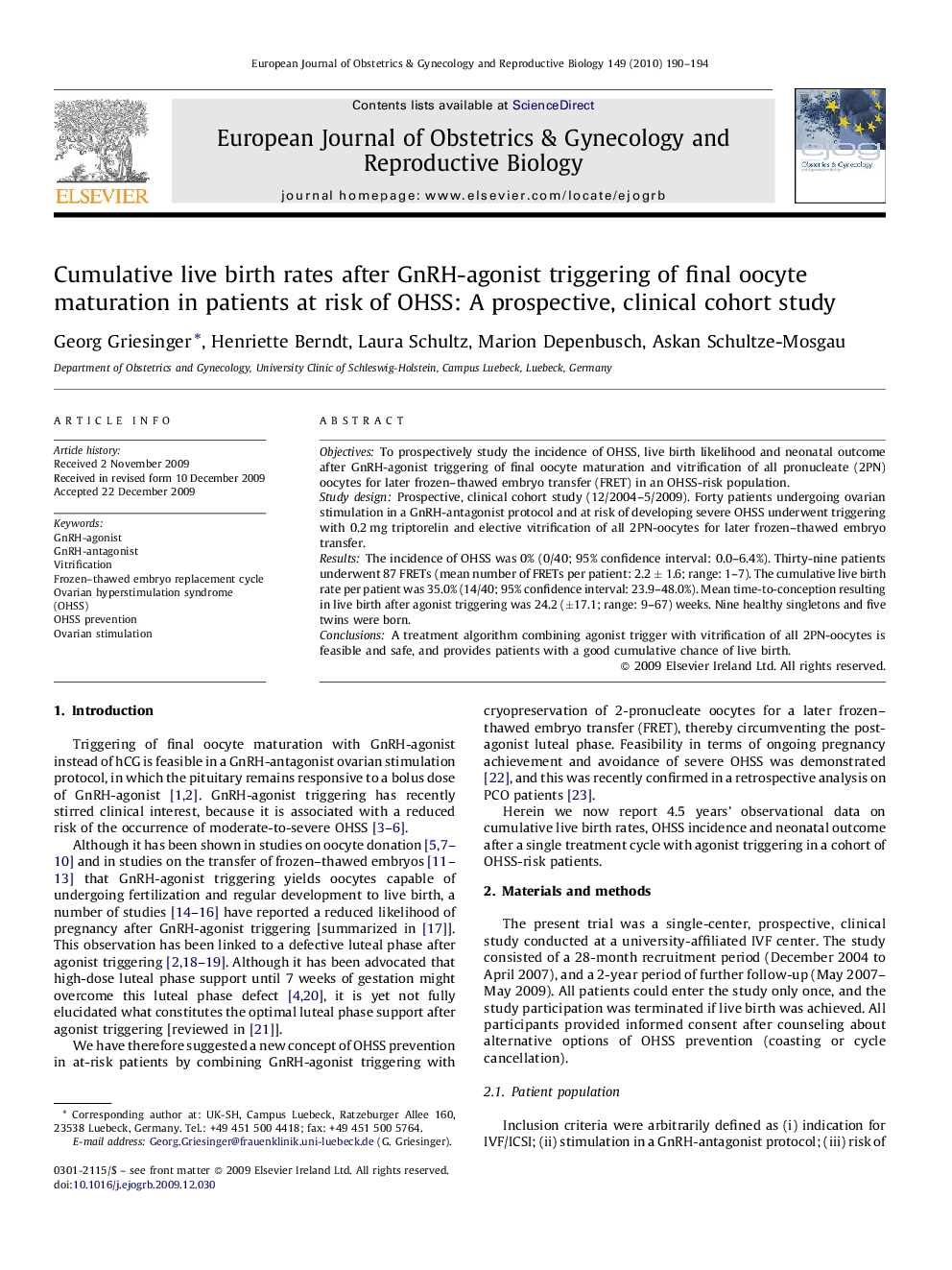| Article ID | Journal | Published Year | Pages | File Type |
|---|---|---|---|---|
| 3920982 | European Journal of Obstetrics & Gynecology and Reproductive Biology | 2010 | 5 Pages |
ObjectivesTo prospectively study the incidence of OHSS, live birth likelihood and neonatal outcome after GnRH-agonist triggering of final oocyte maturation and vitrification of all pronucleate (2PN) oocytes for later frozen–thawed embryo transfer (FRET) in an OHSS-risk population.Study designProspective, clinical cohort study (12/2004–5/2009). Forty patients undergoing ovarian stimulation in a GnRH-antagonist protocol and at risk of developing severe OHSS underwent triggering with 0.2 mg triptorelin and elective vitrification of all 2PN-oocytes for later frozen–thawed embryo transfer.ResultsThe incidence of OHSS was 0% (0/40; 95% confidence interval: 0.0–6.4%). Thirty-nine patients underwent 87 FRETs (mean number of FRETs per patient: 2.2 ± 1.6; range: 1–7). The cumulative live birth rate per patient was 35.0% (14/40; 95% confidence interval: 23.9–48.0%). Mean time-to-conception resulting in live birth after agonist triggering was 24.2 (±17.1; range: 9–67) weeks. Nine healthy singletons and five twins were born.ConclusionsA treatment algorithm combining agonist trigger with vitrification of all 2PN-oocytes is feasible and safe, and provides patients with a good cumulative chance of live birth.
